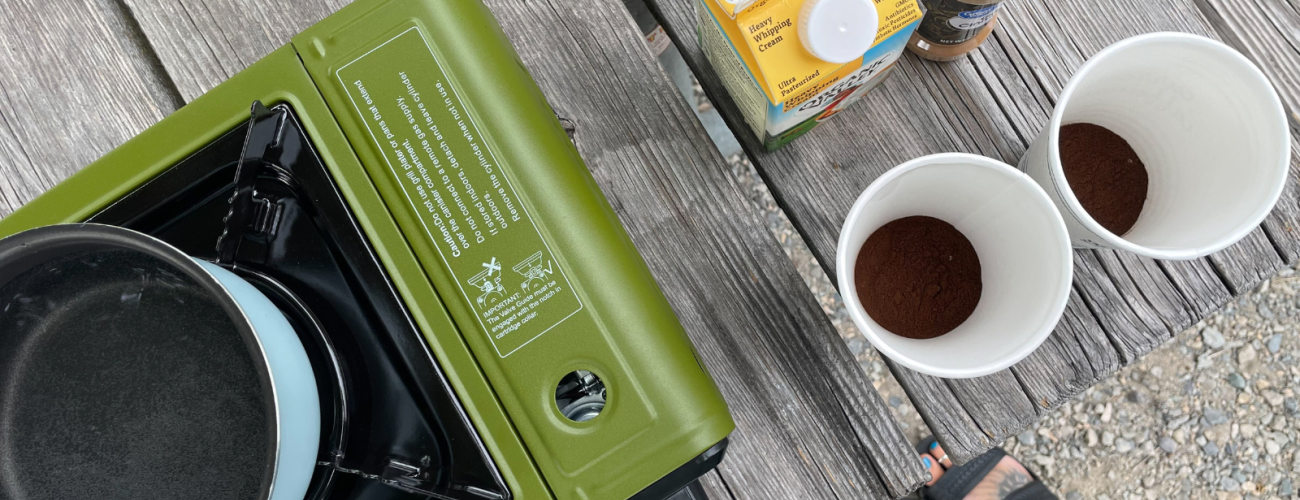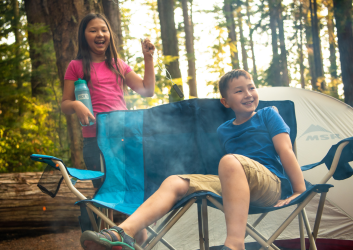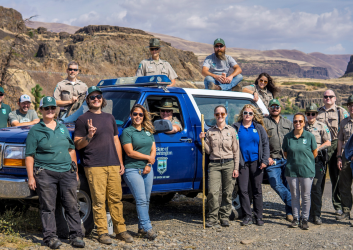How to camp with fire restrictions
This summer – and many others – we have seen what lack of snow, many rainless days and disregarding burn bans can do to our state.
We know campfires are a fundamental part of the camping experience for many people – providing warmth, light, a gathering place for stories and the distinctive aroma that many associate with the great outdoors. For us, the enjoyment of these outdoor spaces in Washington is made possible by the responsible individuals who adhere to annual burn bans when staying at our parks – so thank you!
In return, we're here to provide you with some alternatives to consider when you can’t have a traditional campfire.

Cooking without a fire
Some campers love cooking over an open fire, but when burn bans are in place we must find other ways to cook meals.
The most obvious one, cooking with a camp stove. Camp stoves allow for more cooking options and better temperature control. A single-burner stove is a great choice for solo campers.
If you prefer not to cook on your vacation, you can prepare meals before you go and simply heat them in a pan. You can also pack foods that require no cooking at all, such as sandwiches, fruit, veggies, wraps, salads and more. Some easy camp recipes can be found on our blog.
Name something better than sitting outside, beathing in the fresh air and snacking on fresh fruit and veggies. We'll wait...
Staying warm without a fire
As we start to creep closer to fall and the evening temperatures drop, you might miss that cozy, warm feeling provided by a campfire.
When burn bans restrict the use of firewood in our designated fire pits, but allow open flames from propane devices, consider getting a propane fire pit.
You will still be able to enjoy campfire games and activities, including roasting marshmallows, but won’t have to deal with the smoke and smell a campfire leaves on you and your clothes. Plus, many people find propane fire pits preferable because it eliminates the need to transport firewood to the site, making it one less item to pack.
You could also try using a lantern as a substitute for a fire. While it might not provide as much warmth, you can still have a cozy experience by snuggling up in blankets, sitting on camp chairs and enjoying the same activities and storytelling.
If you have kids: A great activity for them could be to build a fake campfire using construction and tissue paper. Once it's done, it can serve as a great centerpiece for your campsite. We’re sure you won't even miss having a real fire ;) Just be sure to teach them the importance of leaving no trace by cleaning up the area after their project is complete.
Lighting a campsite without a fire
A fire-free evening can make things pretty dark, so coming prepared with other items to illuminate your campsite is necessary when burn bans are in place.
Lanterns, headlamps, even string lights, can help make your site feel just as cozy.
Some of the best camp light devices can enhance your entire camping experience. They may even have dual purposes like charging electronics (when you can’t unplug all the way) and repelling bugs.
And darkness doesn’t have to be a bad thing! Depending on which park you visit, embrace the darkness and enjoy stargazing with your family and friends – identifying constellations like the Big Dipper, or your astrological sign.
Before you head out, be sure to check our park pages to see what level burn ban is in place. Thank you for your continued efforts to not set our state on fire!
Originally published July 31, 2024




